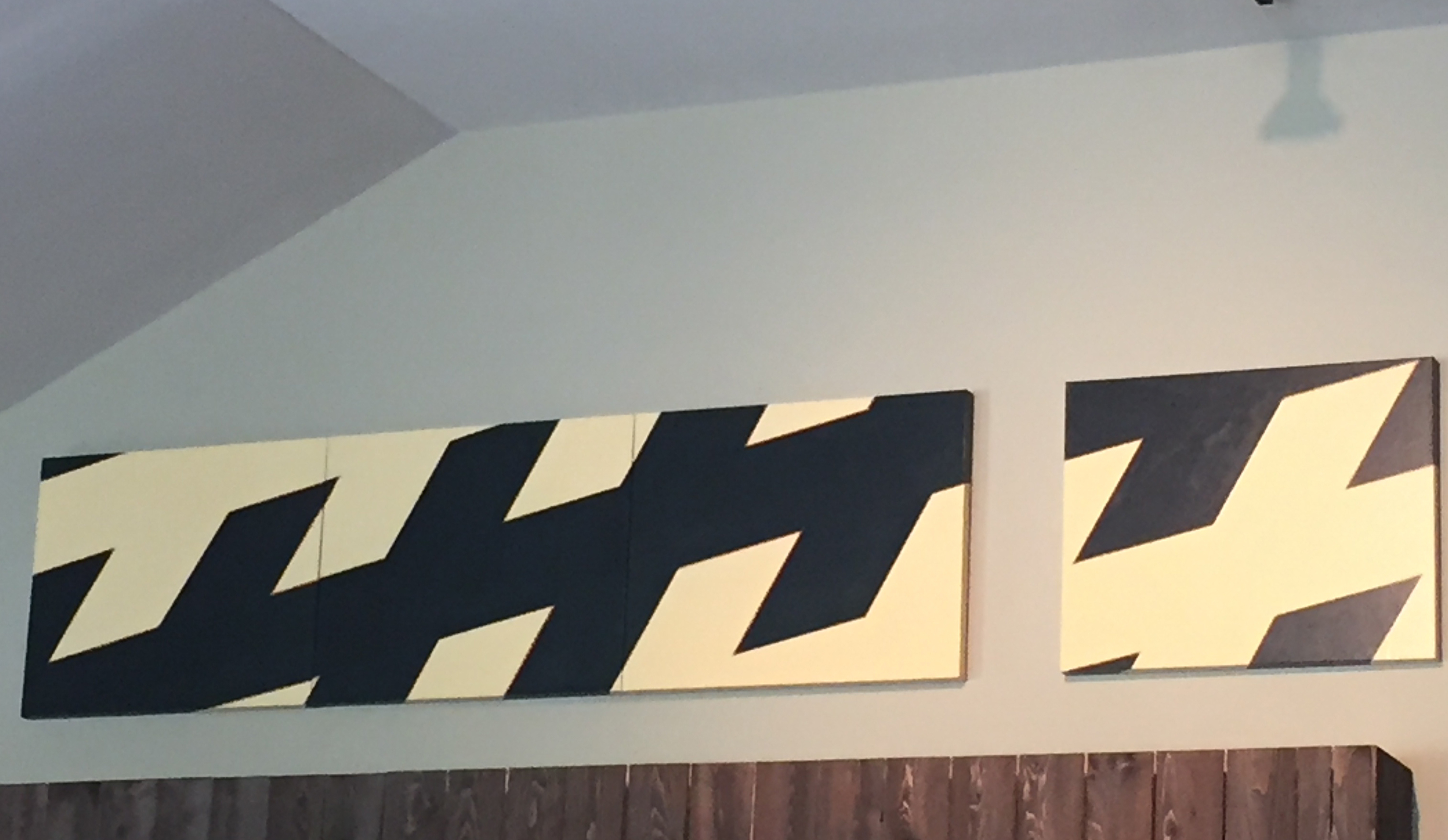My Line series, as discussed in my last blog, was in part inspired by Sol LeWitt who believed that lines were real whereas a portrait or landscape could at best be a mimetic representation of nature. But even lines can be deceptive.
Figure 1 shows the Zöllner illusion, a classic optical illusion named after its discoverer, 19th century German astrophysicist Johann Karl Friedrich Zöllner. In this figure the black lines seem to be unparallel when in reality they are. The illusion is caused by the shorter lines crossing the longer ones on an angle. Interestingly, if the illusion is printed in green on a red background the distortion will disappear.

I first came across Zöllner lines in a catalogue of works by Carsten Höller (b. 1961), a Belgian artist. Höller, whose work often challenges the notions of where and how art is displayed, created an optically disorienting space entitled Zöllner Stripes (2001/2007). I was not interested in creating optical illusions or challenging the notion of art institutions but I did love the form of the Zöllner lines. By focusing on one Zöllner line any illusion could be avoided and the line would remain straight, powerful and real.
In 2014 I painted the two canvases incorporating snippets of Zollner lines using layers of semi-transparent colour to produce a subtle glowing effects. When the two original paintings were hung at Ital-Delli, a restaurant in Mt-Tremblant, I was dissatisfied at how small and insignificant they looked (Figure 2.) All the time and care taken on the subtle colouring was lost when the works were hung high above the viewers under the cathedral ceiling.

Late in 2015 we removed these paintings with the intent to expand them into a larger more visually powerful artwork reflective of the architectural space. Two additional canvasses were prepared by painting a number of undercoats in red and green. Then black and a rich cream colour of yellow ochre and white were applied to all four canvasses. Finally, the black forms were outlines in narrow lines of green and red to create a slight shimmer at the edges.
Three+One is approximately 2 feet high and 10 feet in length. Three paintings are bound together as a triptych and the fourth offset approximately 10 inches to give the illusion that the lines are continuing perhaps ad infinitum. Figure 3 shows the new work hanging again in Ital-Delli and looking much more commanding in its original space.

Painting, even hard edge painting, retains residue of the artist’s hand. Layer upon layers of colour and medium result in a glowing effect that goes beyond what is possible in commercial production. Repetition, variation and the coming together of the whole is the process of art.
References:
Wikipedia: https://en.wikipedia.org/wiki/Zöllner_illusion
Jonathan Shaunessey, One, Some, Many – Three Shows by Carsten Höller, National Gallery of Canada, 2007.
